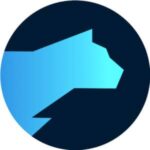

Top 9 Observability Tools in 2022
Cloud infrastructure is becoming more useful for companies but also more complex. DevOps methods have become a critical way of maintaining control over the increasingly robust infrastructure. CEOs across industries are working on implementing the DevOps methodology to ensure functional cloud management, and one of the most effective practices is observability.
With over 74% of CEOs expressing concerns that increased complexity will continue to lead to performance management difficulties, it’s clear that investing in observability tools is a must. But with the wide range of tools available on the market, how do you choose the tool that’s right for you? And what features are more suitable for your organization’s needs? This article lists the top 9 observability tools of 2022 to help you make the best choice for your business.
What is an Observability Tool?
As infrastructure becomes increasingly complex, observability grows more challenging. Observability tools perform the tasks required for observability, including monitoring systems and applications through monitors and logs. In contrast to individual monitoring tools, observability tools allow organizations to receive constant insights and feedback from their systems. Organizations receive actionable insights into their business faster than they would from tools focusing solely on monitoring or logging. Observability tools allow organizations to understand system behavior, giving them the information they need to prevent system problems by predicting them before they occur.
Features to look for in Observability Tools
Before we look at specific tools, let’s examine some of the features you should look for when choosing the right observability tool for your organization. Some features to have in mind include:
- A dashboard that provides monitoring services, such as a clear view of your system
- Alerts in case of events or anomalies
- Tracking abilities to track significant events
- Long term monitoring with comparisons, allowing the system to detect anomalies
- Automated issue detection and analysis
- Event logging for speedy resolution
- The ability to use SLA tracking to measure meta-data and data quality compared to pre-set standards
Top 9 Observability Tools for 2022
The market for observability tools continues to grow, and the variety of choices can become overwhelming. We’ve collected the top nine tools, divided into four categories: shift-left observability, serverless monitoring, incident response, and application performance monitoring.
Shift-Left Observability
The shift-left concept refers to taking processes traditionally performed during later stages of the product lifecycle and implementing them earlier on. Shift-left observability simply means implementing observability practices earlier into the product’s lifecycle.
1. Dynatrace
Dynatrace is a more comprehensive SaaS tool that addresses a wide range of monitoring services, particularly for large-scale organizations. The system uses an AI engine called Davis to automate anomaly detection and root cause analysis services. While pricing may vary depending on the package, it starts at $69 per month for 8 GB per host if billed annually.
Dynatrace’s AI and advanced anomaly detection tools have made it a popular option for large organizations looking to monitor complex infrastructure while quickly detecting vulnerabilities. Unfortunately, the solution does have its downsides, such as being on the more expensive end of observability solutions and lacking updated technical documentation.
2. Lightrun
Lightrun offers a developer-native observability platform that allows users to add logs, metrics, and traces to production and staging. It gives you full observability of your infrastructure, enabling you to quickly detect and mitigate any potential issues without adding extra code. The solution’s logs and metrics can be added in real-time and even while the product is running.
The solution offers a free 14-day trial and affordable pricing. It is already used by companies like Nokia, Taboola, DealHub, and WhiteSource. Lightrun facilitates early debugging in real-time for various systems, from monolith applications to microservices.
Serverless Monitoring
Serverless monitoring allows users to only access infrastructure and resources as they need them instead of pre-purchasing unnecessary server capacity from the get-go. By using serverless monitoring, organizations save money as they only pay for the resources they use.
3. Lumigo
Lumigo is a solution that builds a virtual stack trace of all the services that participate in a process. The tool presents all the data it gathers in a clear visual map with search and filter capabilities, allowing organizations to identify and mitigate issues quickly. Its features include creating data visibility across infrastructure and giving organizations the data they need to remove bottlenecks. A free version is available, and paid versions begin at $99 per month.
Although the system offers many unique capabilities and visual tools such as graphs and timelines, some reports are oversaturated, and it is difficult to sort through for relevant information. The solution is still in its early stages and therefore missing some crucial capabilities.
Incident Response
Incident response is the process used by DevOps, IT, and dev teams to manage any issues or incidents, including damage control and prevention. It generally includes a guideline that delineates the response to follow in the event of an incident.
4. Lightstep
Lightstep is a solution that collects data and presents it clearly and concisely, allowing users to monitor their applications and respond to any unusual changes or anomalies. Lightstep enables users to minimize the effects of outages and other crises on operations. The company offers a free option and group prices starting at $100 per active service per month.
Lightstep provides clear visibility into the required tasks and gives teams insight into what they need to prioritize. Some users report that the solution can perform somewhat slowly at times and that the mobile application doesn’t perform as well as the desktop app.
Application Performance Monitoring
Applications performance monitoring allows organizations to monitor their IT environment, assess whether it meets performance standards, and identify bugs and other potential problems. This allows organizations to upgrade their performance and offer a stellar user experience.
5. Anodot
Anodot’s solution uses machine learning software to constantly assess and compare performance, allowing it to provide real-time anomaly alerts and even predictions of anomaly sources. The solution enables businesses to cut their detection and manage issues faster. Anodot states that most users miss out on 85% of their usable data and claim to minimize detection and resolution time by 80%.
Anodot services are used by major tech companies such as Payoneer and TripAdvisor. The system offers a variety of payment plans and a free demo. Although it provides many valuable features, the system’s UI has room for improvement, and its algorithm is not always accurate.
6. Datadog
Datadog is a monitoring, security, and analytics platform designed for developers, security engineers, IT operations teams, and business users who interact with the cloud. The SaaS platform automates performance monitoring, infrastructure monitoring, and log management. The platform provides users with real-time observability across their entire architecture.
The solution offers a free version, a free trial, and two pricing options that allow users to pay per host starting at $15 or per log, starting at $1.27 per million log events. Datadog is trusted by Shell, Samsung, 21st Century Fox, and many well-known corporations. Despite its many benefits, the system can be challenging to navigate, and the documentation is not always up to par.
7. Grafana
Grafana is an observability tool that creates reports and usage insights for developers and builds dashboards to make data easily viewable and readable. Grafana is trusted by several large corporations, including Siemens, eBay, and PayPal. The platform can be used in conjunction with other similar platforms, including Datadog and Dynatrace, and can report on these platforms’ performance.
A free version of the platform is available, and paid versions start at $8 for a single user. Although the tool is free and includes features such as an alert and notification system, the platform has limited dashboard designs and organization.
8. Honeycomb
Honeycomb is an analysis tool that allows developers to identify application issues quickly. The platform also gives developers the ability to resolve problems using the same interface. The solution enables teams to understand their software better, simplifying the debugging and upgrading process and allowing the team to resolve issues more quickly.
The platform offers a free plan for individuals and a 14-day free trial for enterprises. It is excellent for analyzing systems and identifying the source of incidents, but it is less effective for traditional monitoring purposes.
9. New Relic
New Relic’s platform is designed to speed up the repair process and reduce downtime, increasing productivity and allowing engineers to focus on enhancing application performance. The system is easy to set up and offers real-time analytics to help developers troubleshoot their applications. The platform is flexible and can even provide teams with guidelines offering response suggestions.
The company offers a variety of pricing plans, including a free program and several plans that require contact with the company for pricing details. The system’s application monitoring and infrastructure monitoring stand out for their effectiveness. Still, the system is less effective as a proactive monitoring system and tends to send false alarms.
Observability Is Essential
Observability tools are critical to monitoring growing and increasingly more complex infrastructure. While choosing the correct monitoring tool can be complicated, finding the most suitable one to meet your organization’s needs can streamline your monitoring and maintenance processes. Lightrun offers a solution that provides both monitoring and observability services. To see for yourself, request a Lightrun demo today.
It’s Really not that Complicated.
You can actually understand what’s going on inside your live applications.













